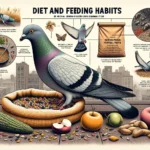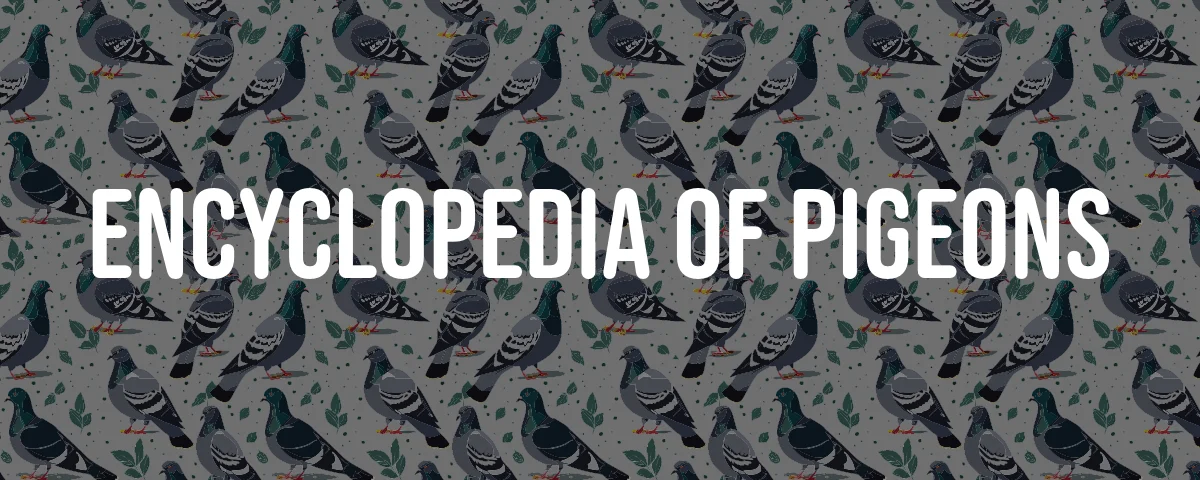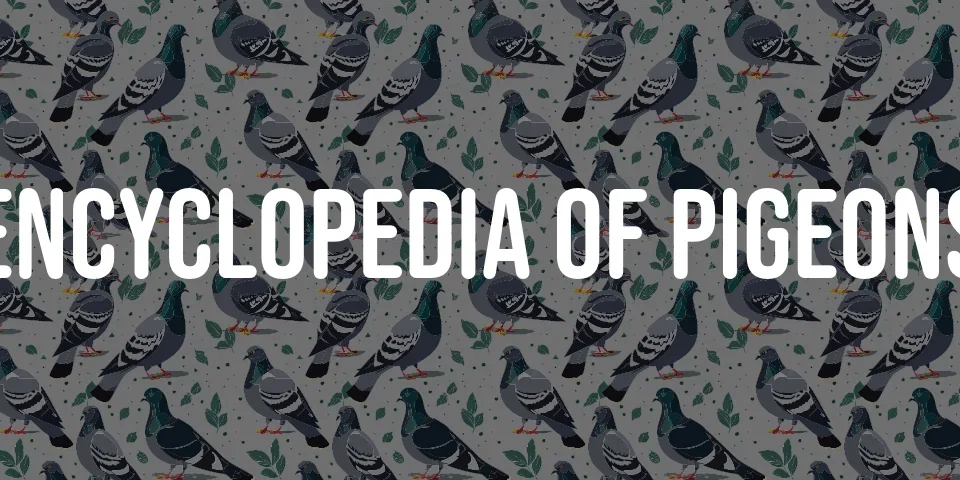Introduction to the Polish Long-Faced Tumbler
Picture this: a bird whose silhouette is unmistakable, as if carved by some eccentric artist obsessed with elegance and a touch of the unusual. That’s the Polish Long-Faced Tumbler—a breed that has been turning the heads of pigeon fanciers for generations. Not your average street-corner city pigeon, this creature is a showstopper in the world of fancy pigeons, thanks to its elongated profile and, dare I say, a face that belongs in a portrait gallery. Hailing from the heartlands of Poland, it’s not just a feast for the eyes; catch one in flight and you’ll be treated to a tumbling aerial ballet, the kind that makes you forget your coffee is going cold.
Its physical résumé? Let’s see: compact yet sturdy, like a perfectly packed suitcase; a head so round you’d think it was molded by hand; and a beak that fits so well, you might suspect an avian tailor had a say in its design. The feathers? A kaleidoscope—no, a festival—of color and pattern, each bird a walking (well, flying) work of art. Years of selective breeding have only sharpened both their looks and those gravity-defying flips, cementing their place in the upper echelons of the Tumbler family. Once you’ve seen one, you don’t forget it.
- compact build,
- rounded head,
- well-proportioned beak.
Origin and History
Let’s jump back in time—past the invention of the typewriter, before Chopin ever played a note. The Polish Long-Faced Tumbler was already fluttering about the cobbled streets and green fields of places like Krakow and Lemberg, regions steeped in stories and old-world charm. This bird’s roots delve deep into Poland’s avicultural traditions, with whispers of its existence dating as far back as the early 1700s. By the time the Crimean War was making headlines, these pigeons had already migrated to Germany. There, someone with a poetic streak dubbed them “silver Galicia”—a name that stuck, much like a catchy folk tune.
What’s in its bloodline? Picture a grand old family tree, with Danish Pigeons and the ethereal Ice Pigeons perched on its branches. Careful cross-breeding over the decades created a bird whose features you can spot from across a crowded dovecote. You don’t just breed a Polish Long-Faced Tumbler; you inherit a piece of cultural history, a living artifact that’s far more than the sum of its feathers.
- Danish Pigeons,
- Ice Pigeons,
- creating a bird with distinctive features that define it today.
Cross-Breeding Background
Breeding pigeons is a bit like composing jazz: you take the best riffs from different players and improvise until something extraordinary emerges. The Polish Long-Faced Tumbler owes its signature look to this kind of creative cross-breeding, where breeders borrowed a bit of elegance from Danish Pigeons, a touch of cool from Ice Pigeons, and spliced in select traits from other breeds, all in pursuit of that elongated, aristocratic face and those acrobatic flourishes in the sky.
- Danish Pigeons,
- Ice Pigeons,
- other selected breeds.
But it’s not just about looking good in the mirror—these birds needed to perform. Each generation brought them a step closer to the perfect marriage of looks and movement. The result? A bird that’s become the darling of pigeon clubs and backyard enthusiasts alike, admired for both its svelte appearance and its flair for airborne theatrics.
Characteristics of the Polish Long-Faced Tumbler
Ever seen a pigeon that looks like it’s been stretched ever-so-slightly by an artist’s hand? The elongated face and beak are the calling cards of the Polish Long-Faced Tumbler, giving it an air of sophistication, almost as if it’s perpetually holding a secret. Its body is all clean lines and subtle curves, a study in avian architecture, with a neck as graceful as a willow branch in a spring breeze. But don’t be fooled by the pretty face—underneath those sleek feathers are powerful wings built for high drama.
Those wings, by the way, aren’t just for fluttering about the park—they’re for tumbling, spinning, and dipping in mid-air, the kind of spectacle that makes you want to put your phone down and just watch. The legs are long and slender, almost model-esque, giving the bird an upright, regal posture. And the colors! If you ever get close enough, you’ll notice no two birds are quite the same; it’s as if each one gets its own custom paint job, courtesy of generations of breeders who knew how to spot a good thing and make it better.
Distinctive Appearance
If you lined up a dozen pigeons, your eye would go straight to the Polish Long-Faced Tumbler. It’s not just the face—though that elongated profile is hard to miss—it’s the whole package: svelte body, feathers that shimmer like silk scarves in a bazaar, and patterns that look as if they were doodled by a Renaissance artist on their lunch break.
- its feathers come in a stunning variety of vivid hues,
- intricate designs give each individual a truly one-of-a-kind appearance,
- these remarkable characteristics are the product of generations of meticulous breeding aimed at achieving its sophisticated look.
And then there’s the way it carries itself—neck stretched, chest out, as if it knows it’s the runway model of the pigeon world.
Flying Ability
Now, about those acrobatics: don’t expect the Polish Long-Faced Tumbler to win any drag races, but when it comes to tumbling, it’s in a league of its own. Watching one in flight is like catching a glimpse of a circus performer on the high wire—graceful, unpredictable, and a little bit daring. Years of selective breeding have honed this skill, and while the breed’s speed won’t break records, its mid-air flips and rolls leave onlookers wide-eyed and grinning. For enthusiasts, it’s less about speed and more about style—think Fred Astaire, not Usain Bolt.
Physical Features of the Polish Long-Faced Tumbler
Let’s zoom in, as if we’re birdwatchers with binoculars glued to our faces. The neck: long, slender, almost impossibly elegant, flowing seamlessly into a body that manages to be both compact and muscular—a paradox, but somehow it works. This isn’t a bird built for brute force; it’s a study in balance and poise. Its physique is the secret behind those effortless aerial tricks, a blend of beauty and brawn that’s rare in the avian world.
Head Form and Judging Criteria
At a pigeon show, it’s all about the details. The Polish Long-Faced Tumbler’s head is its calling card—elongated, yes, but also narrow, like the prow of a ship slicing through water. Judges scrutinize the curve, the angle, the way the beak sits—symmetry is the name of the game, but not the only one. The beak shouldn’t look like an afterthought tacked onto a face; it should flow, as if grown there naturally, as inevitable as dawn.
- shape of the head,
- length of the head,
- placement of the beak.
Additionally, the judge’s eye seeks a certain harmony between head and body—a kind of avian feng shui. When the proportions are right, you’ll know. The bird almost seems to glow.
Neck and Body Structure
Let’s talk necklines. If pigeons had fashion week, this bird would be front row, every time. The elongated, tapering neck leads into a body that’s just the right amount of compact—enough substance for stamina, but never bulky. That balance isn’t just for show; it’s what gives the Polish Long-Faced Tumbler its acrobatic edge. It’s a bit like a gymnast: light on their feet but strong where it counts. The beauty isn’t just skin-deep—it’s built right into their bones.
Tail and Feathering
The tail, often overlooked in lesser breeds, is the Polish Long-Faced Tumbler’s secret weapon. Lush, full, and impeccably arranged, these feathers are more than just decoration—they’re part of the bird’s balancing act. Sometimes the colors are so vivid you’d swear the bird had raided an artist’s paintbox. In the show ring, every feather is counted, every pattern scrutinized. A messy tail? That’s a rookie mistake. Here, only the neatest, most vibrant tails make the cut—and the judges remember.
The Polish Long-Faced Tumbler in Aviculture
Walk into any serious pigeon exhibition and there’s a palpable buzz when a Polish Long-Faced Tumbler enters the ring. Collectors and breeders hover nearby, exchanging knowing glances and the kind of whispered gossip usually reserved for high-stakes auctions. Why? Because this breed is both a living history book and a piece of performance art. Breeders obsess over every detail: the perfect length of face, the shimmer of the feathers, the elegance of the body. It’s almost alchemical, the way they refine these traits year after year.
- elongated facial structure,
- vibrant feathers,
- graceful body design.
At exhibitions, the standards are as high as the birds can fly. Judges peer through spectacles, taking in every angle: Is the head the right shape? Does the beak sit just so? Is there a symmetry that pleases the eye? Every feather, every proportion, is a clue to the breeder’s skill—and to the bird’s place in a tradition that’s as much about art as it is about animal husbandry.
- shape of the head,
- placement of the beak,
- overall symmetry,
- feather quality.
Interestingly, while the breed’s tumbling flights are still admired, recent years have seen the scales tip toward beauty over athleticism. Breeders now chase the perfect look with a fervor once reserved for flight skills. What remains is a bird that’s as much a living sculpture as a performer—an evolution that’s ruffled a few feathers, but that’s aviculture for you.
Role in Fancy Pigeon Breeding
If you’ve ever wandered through the labyrinthine tents of a pigeon fair, you’ll know there’s a hierarchy, and the Polish Long-Faced Tumbler sits comfortably near the top. Its blend of refinement (those faces!) and still-impressive tumbling skills makes it a breeder’s dream. These birds aren’t just bred; they’re curated, each generation bringing a new level of artistry and, occasionally, a surprise twist in color or flair. The breed’s presence in breeding programs stands as a testament to its enduring allure—equal parts showpiece and show-off.
Participation in Pigeon Shows
At competitions, the Polish Long-Faced Tumbler never fades into the background. You’ll spot judges leaning in, tape measures in hand, murmuring about symmetry and feather luster. The elongated face, the balanced head, the flash of vibrant feathers—these are the traits that set pulses racing and spark fierce debates. Sometimes, the crowd is split between old-school fans who prize tumbling and new-school aficionados obsessed with looks. Either way, a winning Tumbler is a badge of honor for its breeder, a story to be retold over coffee and seed for years to come.
- its elongated face,
- symmetrical head,
- vibrant plumage,
- harmonious body proportions.
Ultimately, maybe it’s not really about which bird wins, but about the shared obsession for perfection, for spectacle, for the thrill of seeing something rare and beautiful take flight—then tumble, spin, and land as if nothing ever happened. And just like that, the show moves on, but the legend grows.






